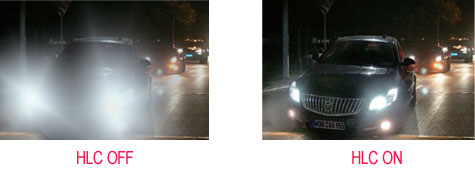Troubleshoot/What Is WDR AWB AGC BLC HLC
What Is WDR, AWB, AGC, BLC, HLC?
WDR
- Wide Dynamic Rangehelps balance washed out video that has a large dynamic range. Dynamic range is a general term for differences in ratios between measurable quantities of something. In WDR this refers to the ratio between the lightest and darkest elements of the image. This is especially prevalent in areas with a lot of natural light like offices or retail stores with large windows. Cameras that have WDR capabilities come with a sensor fitted with two image sensors of the Charge Coupled Device (CCD) type. One of these sensors is for high speed, the other is for low speed image/video capture. They work together to make multiple scans of a scene to provide one balanced and unwashed image that is clear for the user. Two scans are taken of each video frame, instead of one scan like typical cameras. The first scan takes the image in normal light conditions while the other scans the image at high speed to get an image with a strong light in the background. The image processor in the CCDs takes it from there, and then goes on to combine the two images to form one usable view for the user, incorporating both the indoor and outdoor light and clarity. This feature however, is completely dependent and restricted by the actual image sensor that is built into the camera. This is why it is important to understand the quality needed in the product and make sure that a camera has quality components before you buy it.
- Digital Wide Dynamic Rangeis the manufacturer's answer to providing a key feature cheaply. DWDR relies on the DSP chip instead of the image sensor to provide WDR. While nice to have, especially instead of not having any similar features, DWDR seems to be inferior overall to WDR. There are a few reasons for this that we will explore. Where WDR uses Double Scan technology, DWDR uses a digital pixel related manipulation feature. It adjusts each individual pixel of the image and calculates exposure accordingly. Its similar to the differences between digital zoom and optical zoom, the original image that it is modifying is better before any digital effects. Therefore, this technique has some limitations. It's been said that DWDR cannot do much for the very bright pixels, and just brightens the dark ones to compensate for exposure differences. The fact that it is intensely manipulating the pixels leads to the overall image being noticeably more grainy and pixelated. Overall DWDR is a feature that is offered to compensate for a lack of actual WDR which requires more costly image sensors to manufacture the camera.
AWB
- White balance (WB) is the process of removing unrealistic color casts, so that objects which appear white in person are rendered white in your photo. Proper camera white balance has to take into account the "color temperature" of a light source, which refers to the relative warmth or coolness of white light. Our eyes are very good at judging what is white under different light sources, but digital cameras often have great difficulty with auto white balance (AWB) — and can create unsightly blue, orange, or even green color casts. Understanding digital white balance can help you avoid these color casts, thereby improving your photos under a wider range of lighting conditions.
AGC
- Automatic Gain control is a critical, though often overlooked, factor in low light surveillance video. It is generally only noticed when the negative side effective of aggressive gain levels are seen, namely noise / snow on screen.
BLC
- Backlight compensation is a feature that camera companies have been utilizing for some time now. When someone is say sitting in front of a window, or coming in from outside, there is a lot of natural light behind this person. When a camera is aimed in their direction, the camera is picking up all this natural light behind them, therefore the object or person in the foreground becomes very dark, almost silhouette like. Such video is not good for security personnel trying to determine who this person is.
HLC
- Highlight compensation is a feature that came out of necessity due to overexposure from strong light sources like headlights or spotlights. This feature senses strong sources of light in video and compensates for exposure on these spots to enhance the overall quality. HLC is very helpful in preventing blinding of security cameras at night time from headlights. License plate readability is a feature nearly everyone wants and expects from their security cameras placed in parking lots and entry points. Without HLC this is something that is simply impossible due to the bright, glaring nature of headlights.




